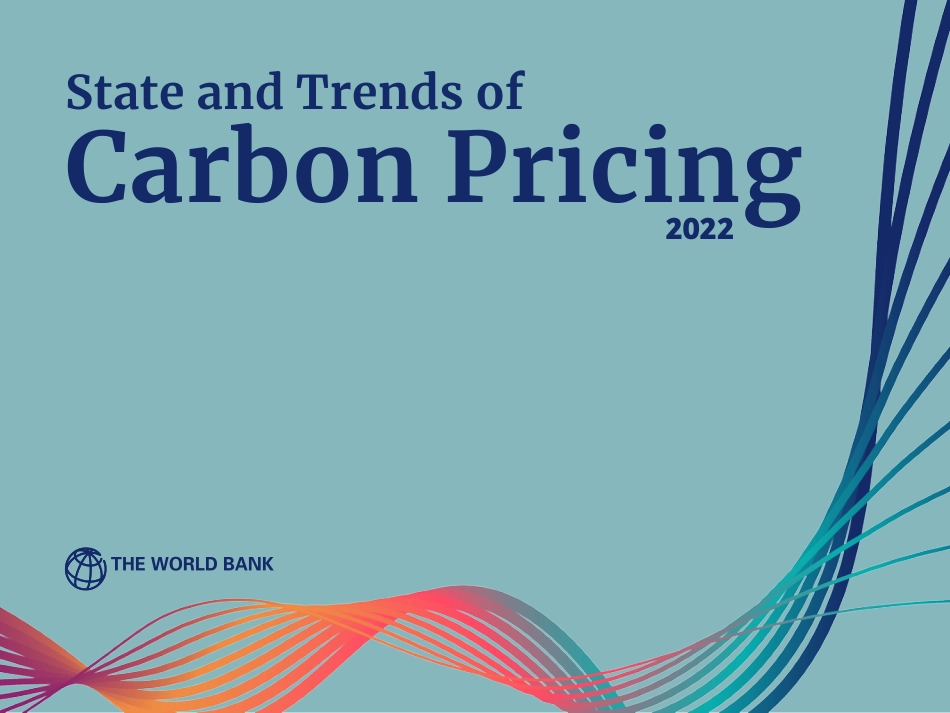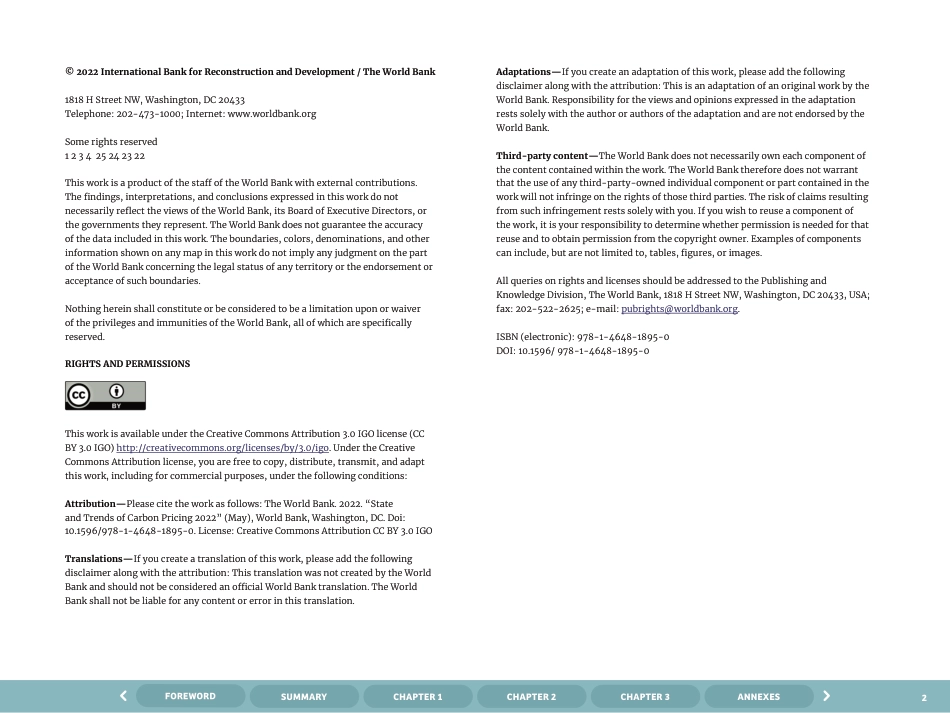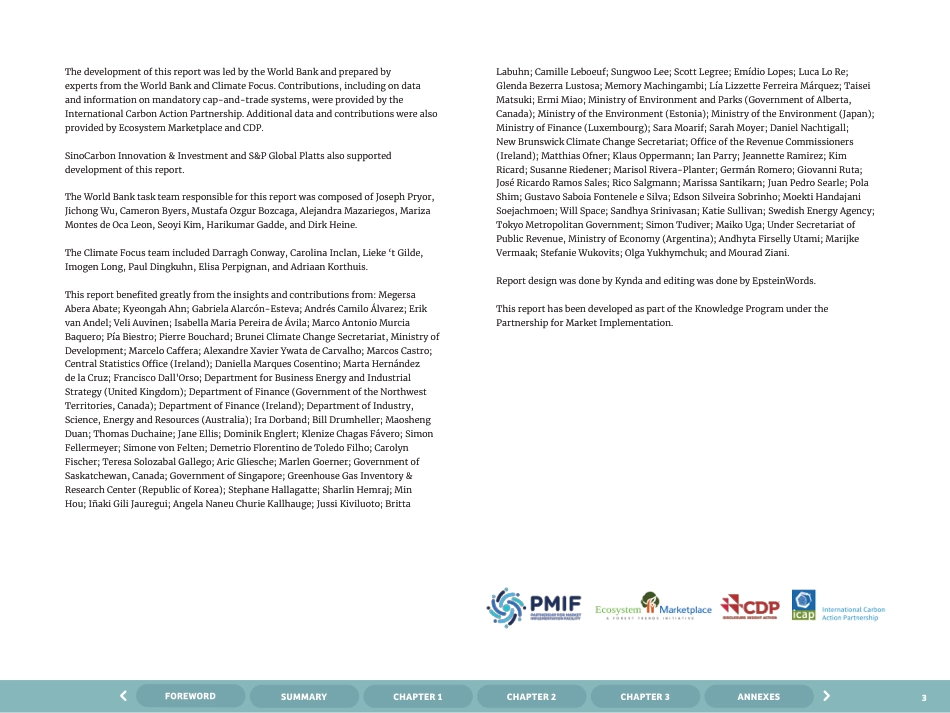State and Trends ofCarbon Pricing2022© 2022 International Bank for Reconstruction and Development / The World Bank1818 H Street NW, Washington, DC 20433Telephone: 202-473-1000; Internet: www.worldbank.orgSome rights reserved1 2 3 4 25 24 23 22This work is a product of the staff of the World Bank with external contributions. The findings, interpretations, and conclusions expressed in this work do not necessarily reflect the views of the World Bank, its Board of Executive Directors, or the governments they represent. The World Bank does not guarantee the accuracy of the data included in this work. The boundaries, colors, denominations, and other information shown on any map in this work do not imply any judgment on the part of the World Bank concerning the legal status of any territory or the endorsement or acceptance of such boundaries.Nothing herein shall constitute or be considered to be a limitation upon or waiver of the privileges and immunities of the World Bank, all of which are specifically reserved.RIGHTS AND PERMISSIONSThis work is available under the Creative Commons Attribution 3.0 IGO license (CC BY 3.0 IGO) http://creativecommons.org/licenses/by/3.0/igo. Under the Creative Commons Attribution license, you are free to copy, distribute, transmit, and adapt this work, including for commercial purposes, under the following conditions:Attribution—Please cite the work as follows: The World Bank. 2022. “State and Trends of Carbon Pricing 2022” (May), World Bank, Washington, DC. Doi: 10.1596/978-1-4648-1895-0. License: Creative Commons Attribution CC BY 3.0 IGOTranslations—If you create a translation of this work, please add the following disclaimer along with the attribution: This translation was not cr...



